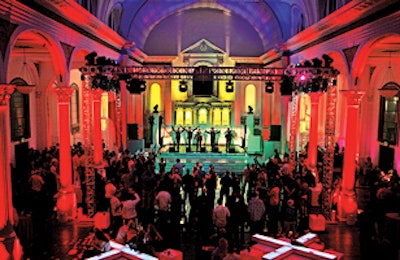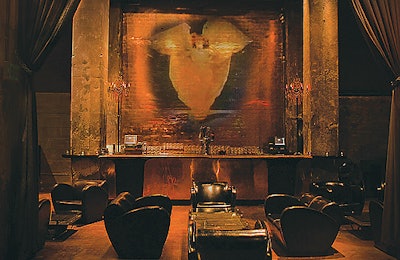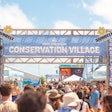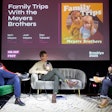If you're old enough to remember the threat of a Y2K bug, you’re old enough to remember a desolate, dangerous downtown Los Angeles, where few ventured unless they were going to work. The 21st century has been kind to the area, which has seen a surge in new venues, residences, public spaces, and cultural institutions, from cool bars and restaurants like the Edison and Trifecta to huge-scale development projects like L.A. Live. Most significantly, the public conversation about downtown has shifted toward enthusiastic praise, and the topic of the area’s spectacular renaissance is a continual din about town. But how much of downtown’s miraculous comeback is real—and how much is perception, hype, and smart P.R.? And just how suitable is the area for special events?“It’s no secret that downtown has been left undone for quite a few years, so I’m not speaking out of turn when I say that,” says Michael Krouse, senior vice president of sales at LA Inc., Los Angeles’s convention and visitors bureau. He admits that downtown events can still be a hard sell but says the numbers tell the story of his group’s and others’ success in convincing the masses: In the 12-month period that ended in June, companies booked 41 conventions in downtown Los Angeles (and more than 535,000 hotel rooms, with an economic impact to the city of $287 million); for the previous 12-month period, that number was just 21. Krouse credits the emergence of residences—mostly lofts and condos—with instigating the services and nightlife that have resuscitated the area.
Nightspots such as the airy, nostalgic Edison are destinations that draw hip young people from neighborhoods throughout L.A.—not just an after-work crowd of local office workers. Gen Art’s regional event director, Matt Wise, who works on events for that set of influencers, routinely takes groups downtown. “Last fall, we did a grand opening at the gorgeous Roosevelt Lofts on 7th Street. We closed off the street, set up ample security at each entry point, lit up some buildings with red LEDs, set up furniture on white carpet right in the middle of the street, cranked up the DJ, and blew it out,” Wise says. “We were an oasis of festivity in an otherwise dark area. Everyone felt safe, everyone had a blast, and I don’t know another city where that would have been possible.”
What works for Gen Art’s grit-tolerant guests might not work for, say, Cartier’s invitee list, but although security is still an issue—the homelessness, poverty, and desperation that pervade nearby Skid Row are hardly invisible—it’s not at the top of the list of concerns among the dozen or so event planners we interviewed. Nor do downtown’s proponents think it ought to be.
“This security thing is my biggest pet peeve, and I’ll tell you why I feel so passionate about it,” Krouse says. “[The crime reputation is] an old perception, and it drives me crazy. I’d have to say that New York has done a great P.R. job [to combat its old reputation for crime], and I’d have to say that L.A. has done a crappy job.” Indeed, according to an F.B.I. report compiled from police data around the country in 2006, Los Angeles had a crime rate 21 percent lower than the average of the 10 U.S. cities with populations of one million or more (ranking just below New York for safety).
Planners’ real concerns relate to L.A.’s notorious burden: a glut of cars and a dearth of places to put them. Some in the event community say the combination of traffic, parking, and distance are still too big a plague on downtown to make it a viable event option.
“It’s difficult to get people from the Westside or those in the entertainment industry down there. It’s not a lack of interesting venues, but a matter of geography and traffic,” says a planner and publicist who works mostly on the Westside. “What’s happening downtown is very exciting, but as traffic increases and travel times take longer, it will be more and more difficult to get people to take the extra time and effort to get there.”
When considering locations for Gen Art’s events, Wise asks himself, Is anyone going to drive downtown on that night, at that time? “We consider whether there is safe and reasonably priced parking available for guests,” he says. For the record, the convention center has more than 5,000 parking spaces, and the new L.A. Live complex—expected to be completed by early 2010—will offer an additional 5,000-plus. (Along with its new parking spaces, L.A. Live is likely to bring with it a significant traffic burden—as well as a breadth of new event venues.)
“Parking is plentiful downtown; it’s just a matter of knowing where it is,” says Carol Schatz, president and C.E.O. of the two largest downtown business organizations, the Central City Association and the Downtown B.I.D. “Traffic is more of an issue now—when you’re talking about events, it’s [a problem of] ingress and egress. But I go to an annual event at [Santa Monica’s] Barker Hangar, and it’s very hard to get out of there, too. Downtown is so quintessentially, infinitely more interesting than anything on the Westside. Unfortunately, [although the B.I.D.] has a lot of clout, fixing the traffic in the city is beyond our scope. But I’m very pleased that, in some ways, the traffic proves the success of the renaissance.”
L.A. traffic is a delicate ecosystem, and it helps if you know its patterns. Downtown is naturally easier to access on weekend nights than weekday rush hour, and planners who do events there keep that fact in mind. “We usually find that people are willing to drive downtown, especially for nighttime events,” Wise says. “We’ve found that our Shop L.A. [daytime sample sale] event doesn’t work as well downtown for some reason. Whether it’s the perceived distance or something else, we’re not sure.”
Logistic issues aside, one of downtown’s major lures is the uniqueness—and relative age, in the context of a relatively young city—of its venue offerings. Warner Music Group’s New York-based vice president of corporate communications, Susan Mazo, says she took her group’s Grammy after-party to the old cathedral now known as Vibiana for more important reasons than its proximity to the award show at nearby Staples Center. “The location wasn’t the primary factor,” she says. “In fact, we’ve hosted very successful post-Grammy events in all parts of Los Angeles. What drives us first and foremost is the emotional response we have to the event space, and St. Vibiana’s Cathedral is an exceptional venue that inspired many ideas from the moment we entered. Of course parking and other logistics are important factors, but it has to start with the venue. I can’t imagine walking into a venue and saying, ‘Wow, what great parking!’”
Similarly, fashion designer Eduardo Lucero took the show for his recent collection away from Mercedes-Benz Fashion Week’s official location in Culver City and brought the event instead to the historic Los Angeles Theatre downtown. “It’s always a bit of a risk when you’re trying to move Westsiders to downtown. Sometimes there is resistance; to a lot of people, it’s still this nowhere land, and you have to deal with people’s fears,” Lucero says. “There are a lot of amazing venues downtown that are not being used, in part because people don’t even know they exist—[but] the spaces are really cool.”
Mazo shares the same thinking. “We would absolutely host another event downtown,” she says. “Downtown features a rich architectural heritage that is unique to L.A., which makes reinventing historic venues extremely exciting.”
Nightspots such as the airy, nostalgic Edison are destinations that draw hip young people from neighborhoods throughout L.A.—not just an after-work crowd of local office workers. Gen Art’s regional event director, Matt Wise, who works on events for that set of influencers, routinely takes groups downtown. “Last fall, we did a grand opening at the gorgeous Roosevelt Lofts on 7th Street. We closed off the street, set up ample security at each entry point, lit up some buildings with red LEDs, set up furniture on white carpet right in the middle of the street, cranked up the DJ, and blew it out,” Wise says. “We were an oasis of festivity in an otherwise dark area. Everyone felt safe, everyone had a blast, and I don’t know another city where that would have been possible.”
What works for Gen Art’s grit-tolerant guests might not work for, say, Cartier’s invitee list, but although security is still an issue—the homelessness, poverty, and desperation that pervade nearby Skid Row are hardly invisible—it’s not at the top of the list of concerns among the dozen or so event planners we interviewed. Nor do downtown’s proponents think it ought to be.
“This security thing is my biggest pet peeve, and I’ll tell you why I feel so passionate about it,” Krouse says. “[The crime reputation is] an old perception, and it drives me crazy. I’d have to say that New York has done a great P.R. job [to combat its old reputation for crime], and I’d have to say that L.A. has done a crappy job.” Indeed, according to an F.B.I. report compiled from police data around the country in 2006, Los Angeles had a crime rate 21 percent lower than the average of the 10 U.S. cities with populations of one million or more (ranking just below New York for safety).
Planners’ real concerns relate to L.A.’s notorious burden: a glut of cars and a dearth of places to put them. Some in the event community say the combination of traffic, parking, and distance are still too big a plague on downtown to make it a viable event option.
“It’s difficult to get people from the Westside or those in the entertainment industry down there. It’s not a lack of interesting venues, but a matter of geography and traffic,” says a planner and publicist who works mostly on the Westside. “What’s happening downtown is very exciting, but as traffic increases and travel times take longer, it will be more and more difficult to get people to take the extra time and effort to get there.”
When considering locations for Gen Art’s events, Wise asks himself, Is anyone going to drive downtown on that night, at that time? “We consider whether there is safe and reasonably priced parking available for guests,” he says. For the record, the convention center has more than 5,000 parking spaces, and the new L.A. Live complex—expected to be completed by early 2010—will offer an additional 5,000-plus. (Along with its new parking spaces, L.A. Live is likely to bring with it a significant traffic burden—as well as a breadth of new event venues.)
“Parking is plentiful downtown; it’s just a matter of knowing where it is,” says Carol Schatz, president and C.E.O. of the two largest downtown business organizations, the Central City Association and the Downtown B.I.D. “Traffic is more of an issue now—when you’re talking about events, it’s [a problem of] ingress and egress. But I go to an annual event at [Santa Monica’s] Barker Hangar, and it’s very hard to get out of there, too. Downtown is so quintessentially, infinitely more interesting than anything on the Westside. Unfortunately, [although the B.I.D.] has a lot of clout, fixing the traffic in the city is beyond our scope. But I’m very pleased that, in some ways, the traffic proves the success of the renaissance.”
L.A. traffic is a delicate ecosystem, and it helps if you know its patterns. Downtown is naturally easier to access on weekend nights than weekday rush hour, and planners who do events there keep that fact in mind. “We usually find that people are willing to drive downtown, especially for nighttime events,” Wise says. “We’ve found that our Shop L.A. [daytime sample sale] event doesn’t work as well downtown for some reason. Whether it’s the perceived distance or something else, we’re not sure.”
Logistic issues aside, one of downtown’s major lures is the uniqueness—and relative age, in the context of a relatively young city—of its venue offerings. Warner Music Group’s New York-based vice president of corporate communications, Susan Mazo, says she took her group’s Grammy after-party to the old cathedral now known as Vibiana for more important reasons than its proximity to the award show at nearby Staples Center. “The location wasn’t the primary factor,” she says. “In fact, we’ve hosted very successful post-Grammy events in all parts of Los Angeles. What drives us first and foremost is the emotional response we have to the event space, and St. Vibiana’s Cathedral is an exceptional venue that inspired many ideas from the moment we entered. Of course parking and other logistics are important factors, but it has to start with the venue. I can’t imagine walking into a venue and saying, ‘Wow, what great parking!’”
Similarly, fashion designer Eduardo Lucero took the show for his recent collection away from Mercedes-Benz Fashion Week’s official location in Culver City and brought the event instead to the historic Los Angeles Theatre downtown. “It’s always a bit of a risk when you’re trying to move Westsiders to downtown. Sometimes there is resistance; to a lot of people, it’s still this nowhere land, and you have to deal with people’s fears,” Lucero says. “There are a lot of amazing venues downtown that are not being used, in part because people don’t even know they exist—[but] the spaces are really cool.”
Mazo shares the same thinking. “We would absolutely host another event downtown,” she says. “Downtown features a rich architectural heritage that is unique to L.A., which makes reinventing historic venues extremely exciting.”

Downtown venue Vibiana.
Photo: Courtesy of Vibiana

One of downtown's most architecturally striking buildings houses the event venue Vibiana.
Photo: Courtesy of Vibiana

The Redwood Bar & Grill has a whimsical nautical theme.
Photo: Nicole Weingart

Around the corner from the Redwood, Trifecta is a sophisticated sports bar and lounge.
Photo: Courtesy of Trifecta

The Edison draws a flock of cool kids to its soaring, nostalgic space.
Photo: Courtesy of the Edison



















